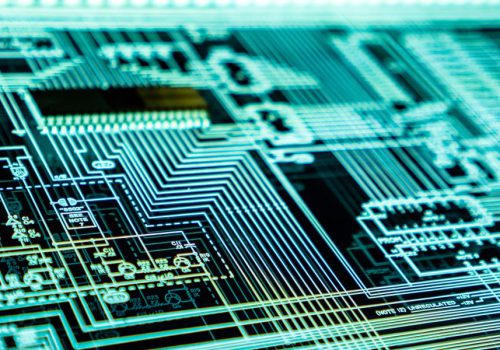The surge of emerging technologies in the last years shows the rapidness at which advancements and innovations are made. This has caused a big need for organizations to take action and prepare to stay up-to-date with new technologies.
Nonetheless, with this advancement have come concerns as well, therefore, ensuring best practices to stay ahead, prepare for any malicious acts, and stay ahead of cyber threats, is crucial, now more than ever.
Below we have compiled a list with a few interesting facts on innovative technologies:
- Global digital transformation spending is forecast to reach 3.4 trillion U.S. dollars by 2026.
In 2022, digital transformation (DX) spending is to reached 1.8 trillion U.S. dollars, with that in mind, the projected spending on digital transformation by 2026 is 3.4 trillion U.S. dollars. - The CEO of Google, Sundar Pichai, claimed that artificial intelligence (AI) would be more transformative to humanity as a species than electricity and fire.
He likened the transformative power of AI to that of electricity and fire, two pivotal innovations that reshaped human civilization. By placing AI in this context, Pichai illuminated the unprecedented scope of AI’s influence. - IoT involves so much data, that it is measured in zettabytes.
The sheer volume of data generated by IoT is so immense that it is measured in zettabytes, a unit equivalent to one sextillion bytes. The concept of zettabytes provides a glimpse into the exponential growth of data in the digital age, further emphasizing the transformative potential of IoT. - A McKinsey survey from 2021 found that 56% of companies have adopted AI in at least one function within the organization, which is an increase from 50% the year prior.
Such trajectory underscores the escalating integration of AI into diverse business functions, from customer service to data analysis, signifying a paradigm shift in how organizations harness technology to enhance efficiency and outcomes. - In 2010, someone in Florida paid 10,000 Bitcoin for two pizzas, worth then about $40. It is generally considered the first commercial Bitcoin transaction.
This transaction’s retrospective significance lies in its symbolic representation of how far the cryptocurrency landscape has evolved since its inception. - According to International Data Corporation (IDC), the spending on AI will reach $22 billion in 2022 across Europe. The number is expected to surpass $133 billion by 2028.
The financial trajectory of artificial intelligence (AI) spending in Europe paints a vivid picture of its exponential growth. This not only underscores the confidence in AI’s impact but also foreshadows its pervasive integration across sectors. - The first IoT device was a soda machine at Carnegie Mellon, which led to the development of the first widely used IoT device—ATMs.
This breakthrough subsequently paved the way for the development of more sophisticated IoT devices, with automated teller machines (ATMs) emerging as one of the earliest and widely adopted examples. - In 1956, Sir John McCarthy hosted a scientific conference at Dartmouth College where he coined and defined the term “Artificial Intelligence”, later to be known as the Father of Artificial Intelligence.
This event marked the formalization of a field that would subsequently shape technological landscapes and human interactions in profound ways. McCarthy’s pivotal role in conceptualizing and articulating AI’s essence solidifies his status as a trailblazer in the archives of computer science. - In 2021, global spending on digital transformation reached U.S.$1.59 trillion, an increase of 20% from the previous year.
The surge in investment exemplifies the imperative for organizations to adapt and evolve in the face of rapid technological advancements. - IoT is responsible for powering smart cities, such as Shanghai, Seoul, New York, Barcelona, and Beijing, the top five smart cities according to Juniper Research.
IoT serves as the technological backbone that empowers these cities to optimize resource allocation, enhance infrastructure, and improve the quality of life for residents. The integration of IoTenabled sensors, devices, and data-driven insights underpins the smart city paradigm, revolutionizing urban planning and administration for a more sustainable and efficient future.
Conclusion
In the rapidly evolving landscape of innovative technologies, we have uncovered a tapestry of fascinating facts. These revelations illuminate the boundless potential that technology holds in reshaping our world.
As we navigate this transformative journey, embracing these insights is pivotal to harnessing the true power of technological progress.









